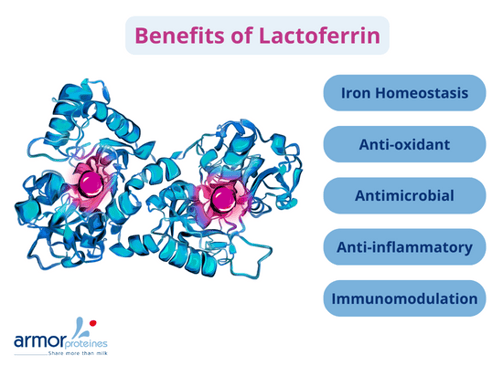The demystification of women’s health issues has brought about a real boom in nutraceuticals aimed at female health and beauty (more than $53 billion in 2022). This sector is constantly evolving and full of opportunities, both in terms of innovative ingredients and new benefits.
Women’s health issues
Over the course of her life, particularly during puberty, pregnancy and menopause, a woman goes through many stages which are greatly influenced by hormonal changes. For example, she may be subject to:
- premenstrual syndrome (PMS). Occurring just before the onset of menstruation, PMS is a series of psychological and physical symptoms such as fatigue, irritability, stomach pains, etc. It concerns 20 to 40% of women of childbearing age[1].
- the risk of anemia, which is more common in women and is often linked to iron deficiency. Severe anemia can cause dizziness, increased heart rate, respiratory discomfort, or amenorrhea (the absence of menstruation). Anemia affects 30% of women of childbearing age[2] and can have an impact on a baby’s proper development.
- postpartum issues. After childbirth, women go through a period called postpartum. During this period, 64% of them suffer from fatigue[3] and 60 to 80% suffer from psychological problems, such as mood disorders and anxiety[4].


Women's health: nutraceuticals, an interesting solution
Nutraceuticals: the new gold mine in women's health
With revenues of $53.4 billion in 2022, the global market for women’s health and beauty supplements is growing strongly with a compound annual growth rate of 5.1% expected from 2023 to 2030.[1]
We covered the strong growth in the dietary supplements markets in Asia, USA and Europe in the first article. The female health supplement segment of these markets is also growing.
Asia Pacific dominated the global women’s health and beauty supplements market in 2022, with a 38.8% revenue share5.
In France, the women’s health market represents €44 million for products sold in pharmacies and drugstores[2], i.e. 4.3% of the total food supplements market, with a growth of 9.47% over the 2020-2021 period.
Growing consumer interest in dietary supplements
Today, 1 in 4 people worldwide consume dietary supplements on a daily basis[1].
Consumers are tending towards comprehensive care for their health. The consumption of dietary supplements is expected to continue to grow in the future, including in the area of women’s health[2].
Women are the main consumers: in France, 8 out of 10 dietary supplements are purchased by women[3]. In the US, 77% of women take dietary supplements[4].
.jpg?width=479&height=319&name=GettyImages-1188961827%20(1).jpg)
More targeted innovations and benefits
With women’s issues being considered less of a taboo subject, manufacturers are seeking to target new products to meet increasingly specific needs: more than twenty sub-segments are currently present in the area of women’s health. And yet, many issues are still not covered: postpartum, hair loss, stopping birth control, PCOS, endometriosis, post-ovulatory phase of the cycle, baby blues, early menopause, etc.
To respond to women’s health issues, ingredients are becoming more technically advanced to offer ever greater efficacy to consumers seeking tangible proof, through consumer tests and clinical studies. Probiotics, CBD, plant-based adaptogens, dairy-based active ingredients… innovation is central to new formulas for women’s health.
Lactoferrin, an innovative ingredient for women's health
Lactoferrin is a glycoprotein naturally present in cow’s milk and human biological fluids such as breast milk. The focus of 9,300 scientific papers[1], it has multiple biological effects with its ability to bind iron, its antioxidant, antimicrobial and anti-inflammatory powers, and its immunomodulation[2] capabilities.

Sources
[1] INSERM, #PayeTonCycle : C’est quoi le syndrome prémenstruel ?
[2] World Health Organization Global Anaemia estimates, 2021 Edition
[3] Badr HA, Zauszniewski JA. Meta-analysis of the predictive factors of postpartum fatigue. Appl Nurs Res. 2017 Aug;36:122-127. doi: 10.1016/j.apnr.2017.06.010. Epub 2017 Jun 19. PMID: 28720232.
[4] Manjunath NG, Venkatesh G, Rajanna. Postpartum Blue is Common in Socially and Economically Insecure Mothers. Indian J Community Med. 2011 Jul;36(3):231-3. doi: 10.4103/0970-0218.86527. PMID: 22090680; PMCID: PMC3214451
[5] Grand View Research, Women’s Health And Beauty Supplements Market Size, Share & Trends Analysis Report By Product, By Application, By Age Group, By Consumer Group, By Sales Channel, By Region, And Segment Forecasts, 2023 – 2030
[6] Strapharm, La santé de la femme, un marché qui se réinvente, 2021
[7] FMCG Gurus, Exploring the impact of nutritional supplements, septembre 2020
[8] IFOP. Les compléments alimentaires, un marché en pleine mutation pour attirer de nouveaux consommateurs. 2021
[9] Actif’s n°80, Santé Féminine : inventive et audacieuse, 2022
[10] Council for responsible nutrition, Consumer Survey on Dietary Syupplements, 2018
[11] Pubmed
[12] Presti, S.; Manti, S.; Parisi, G.F.; Papale, M.; Barbagallo, I.A.; Li Volti, G.; Leonardi, S. Lactoferrin: Cytokine Modulation and Application in Clinical Practice. J.Clin. Med. 2021, 10, 5482.
Li, Y.-Q.; Guo, C. A Review on Lactoferrin and Central Nervous System Diseases. Cells 2021, 10, 1810.
Karav S, German JB, Rouquié C, Le Parc A, Barile D. Studying Lactoferrin N-Glycosylation. Int J Mol Sci. 2017 Apr 20;18(4):870.
.jpg)



